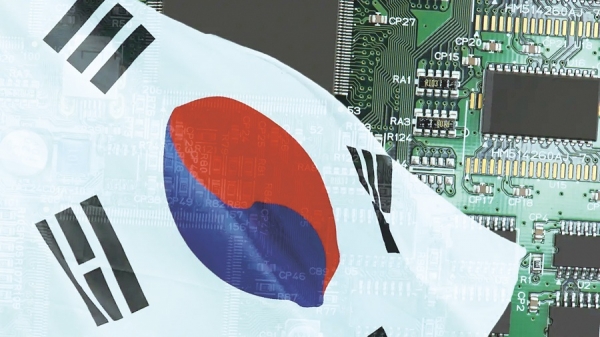
Semiconductor industries have risen steadily during the last two years, which will be recorded as the worst stagnation in various industries around the world due to COVID-19. Increasing demand for IT devices via the non-face-to-face contact spread, additional data center constructions due to the OTT market growth caused a continuous rise in demand for semiconductor components.
In South Korea, Samsung Electronics (SEC) was expected to receive a blow to sales due to the recently occurred GOS (Game Optimizing Service) incident, but they covered the losses through semiconductor sales. SK Hynix had the biggest sales in the first quarter of all time even though it is the off-season.
Semiconductor corporations are divided into two types, foundries which are in charge of manufacturing and fabless which are in charge of designing. In the foundry market, Taiwan's TSMC is in an unrivaled position accounting for more than 50% of the global market share. In Fabless, NVIDIA and AMD of the U.S. occupy more than 50% of the global market share.
South Korean companies are showing strong performances in memory sales. As for DRAM, SEC and SK Hynix show dominance, accounting for more than 70% of the total market. Although the memory market is one of the most volatile markets, memory business is prominent in the semiconductor industry ranking. According to Eugene Investment & Securities, the importance of memory has steadily increased over the past decade. In addition, semiconductor exports in January recorded 10.82 billion USD, recording more than 10 billion USD for the ninth consecutive month.
According to OMDIA, a global market research institute, Korean companies’ share in the global semiconductor market takes second place following the U.S., but China and Taiwan are quickly catching up as emerging power. In last year's report of the Korea Semiconductor Industry Association (KSIA), only one Korean company was included among the top 50 fabless companies in the world. Also, in the middle of the unstable supply of automotive semiconductors in recent years, Korea’s companies have a poor market share in the global automotive semiconductor market.
In particular, the stock prices of semiconductor enterprises ran worst in January. Among the 50 major semiconductor companies, stock prices of all but TSMC fell. Furthermore, there is concern that the demand for memory semiconductors will start to slow down due to China’s blockade policy caused by COVID-19 and the prolonged Russia-Ukrainian war. Despite the increase in semiconductor sales, financial districts lowered the target stock prices. The KDB Industry Trend Report for 2022 pointed out the unstable semiconductor supply chain as a major issue.
Until now, Korean companies have performed well, but tensions in the industry are gradually rising as these variables occur. While expectations and concerns about the semiconductor industry coexist, experts point out that the proportion of investment relative to corporate performance is still insufficient. Yu Jin, Professor Emeritus at KAIST, said through the Korea Development Institute (KDI) in the last October that it is necessary to establish a semiconductor research institute in Korea.
Accordingly, SEC is preparing to improve the plant development system and secure a new R&D line. SK Hynix also plans to expand investment by expanding its business fields through M&A. And both companies began to work with universities and the government to establish semiconductor research and education institutions to cultivate people with talent. Through such investment, Korea’s semiconductor industries are trying to turn around.


